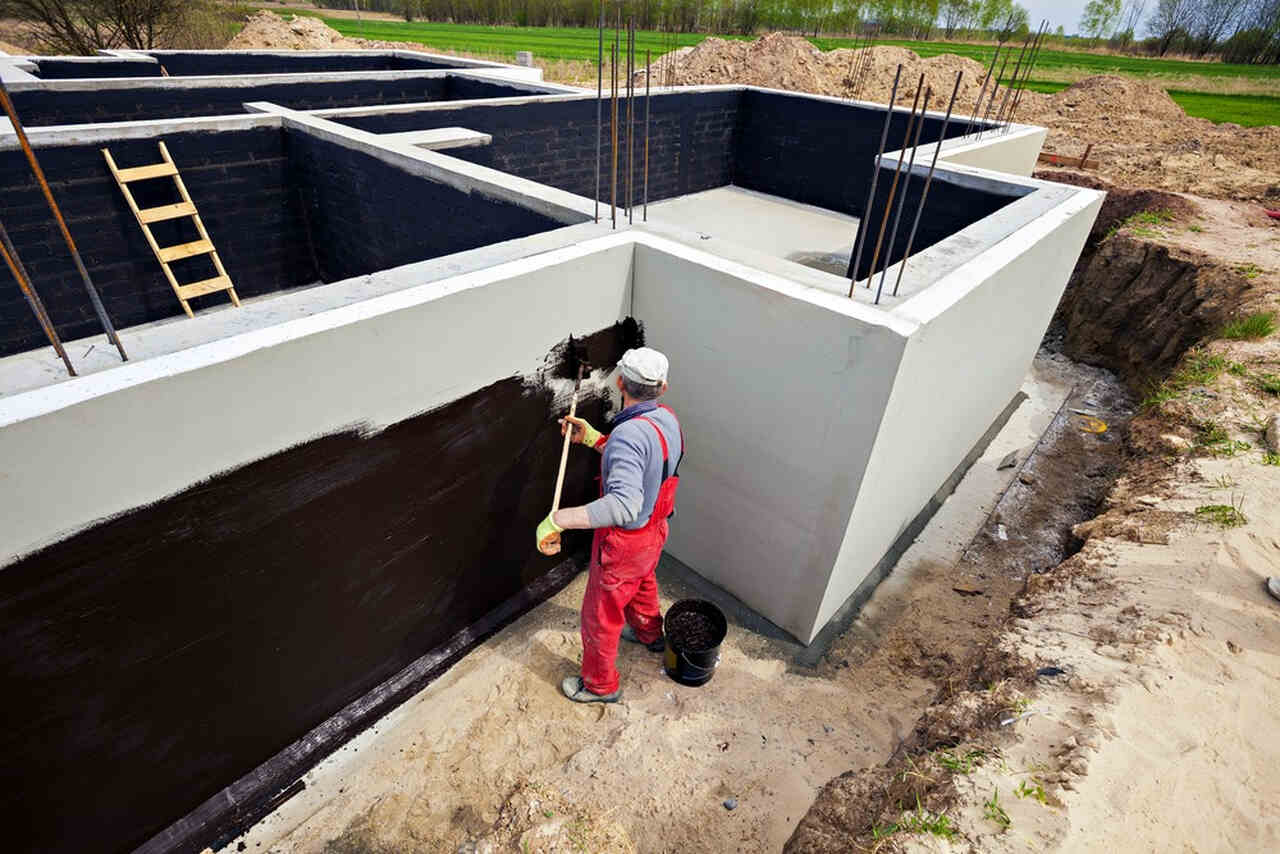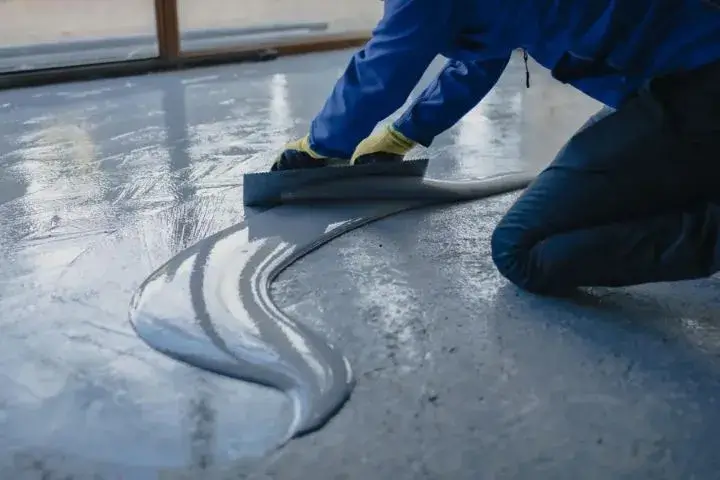Why Waterproofing Is Critical for Long-Lasting Structures: an In-Depth Analysis
Waterproofing plays a necessary role in the longevity of structures. It works as a barrier against dampness, which can result in significant concerns like mold and mildew and wear and tear. Understanding the various waterproofing methods and their implications is essential for homeowner. The effects of overlooking this facet can be severe. Checking out these aspects discloses not simply the need of waterproofing, but likewise its broader influence on building value and safety and security.
Understanding Waterproofing: Definition and Importance
Waterproofing serves as a necessary barrier against moisture intrusion, guarding structures from possible damage. It incorporates various methods and products made to avoid water penetration into structures, ensuring long life and functionality. The significance of waterproofing can not be overstated, as it secures against an array of concerns, consisting of mold and mildew development, degeneration of products, and structural weakening.Effective waterproofing options can consist of membranes, finishings, and sealants, each tailored to particular atmospheres and architectural styles. By producing a safety layer, these options help preserve a completely dry inside, which is crucial for the health and wellness of owners and the preservation of building value.Moreover, spending in waterproofing at the construction phase is significantly much more economical than resolving water-related issues after they develop. Understanding the concepts of waterproofing is crucial for engineers, building contractors, and residential property proprietors aiming for long lasting, resilient frameworks that withstand the test of time and environmental difficulties.

The Influence of Water Damages on Structural Stability
Water damage poses considerable threats to structural stability, largely through the development of mold and mildew and mildew. These organisms not only jeopardize interior air quality but likewise lead to product degradation with time. Furthermore, prolonged exposure to wetness can compromise architectural parts, enhancing the probability of collapse or failure.
Mold and Mildew Development
Wetness invasion presents a considerable danger to the architectural integrity of structures, leading to the expansion of mold and mildew and mildew. These fungi grow in damp settings, usually settling in concealed areas such as wall cavities, under floor covering, and in ceilings. Their growth not just creates undesirable discolorations and undesirable odors however also adds to a decline in interior air top quality, posturing health and wellness dangers to residents. Mold and mold can compromise products like wood and drywall, resulting in further moisture retention and producing a cycle of damages. Early detection and remediation are important to avoid considerable development, emphasizing the requirement of efficient waterproofing steps. Attending to dampness issues quickly can secure both the health and wellness of inhabitants and the longevity of the framework.
Architectural Weakening Risks
Unchecked moisture intrusion can cause extreme structural weakening, threatening the stability of buildings. Water damage frequently influences fundamental parts, such as light beams, columns, and walls, causing compromised load-bearing capability. Long term direct exposure to wetness can create products like wood to rot and steel to corrode, deteriorating their architectural buildings. This wear and tear may lead to cracks, bowing, and even disastrous failings if left unaddressed. Landscape drainage Omaha. Furthermore, water seepage can weaken the soil below foundations, causing settling or shifting that more worsens architectural threats. As a result, applying efficient waterproofing solutions is vital in preserving a building's structural integrity, preventing expensive repair services, and making certain safety and security for owners. Proper maintenance and proactive measures are crucial in minimizing these considerable threats related to water damages
Types of Waterproofing Approaches and Products
Waterproofing techniques and products play an important duty in shielding structures from water damages. Trick strategies consist of membrane layer waterproofing, which offers a physical barrier; fluid waterproofing services that form a smooth coat; and cementitious waterproofing options understood for their toughness and ease of application. Recognizing these different approaches is important for selecting one of the most appropriate approach for specific building and construction needs.
Membrane Layer Waterproofing Methods
Membrane waterproofing strategies are necessary for securing structures from the destructive results of water seepage. These methods include the application of water resistant membranes that create a barrier versus moisture. Both primary kinds of membrane layer systems are sheet membranes and liquid-applied membranes. Sheet membrane layers, typically made from products such as rubberized asphalt or thermoplastic, are built and can be rolled out and stuck to surface areas. In comparison, liquid-applied membrane layers are used as a liquid and treatment to form a seamless layer. Both kinds provide adaptability and resilience, dealing with various applications, including roofing systems, basements, and structures. Correct setup and maintenance of these membranes ensure lasting security, improving the life expectancy and honesty of the frameworks they protect.
Liquid Waterproofing Solutions
Fluid waterproofing options stand for a versatile alternative to traditional membrane systems. These solutions typically involve the application of fluid layers that heal to create a smooth, sturdy obstacle against water infiltration. Numerous sorts of liquid waterproofing products are available, including polyurethane, asphalt, and acrylic-based formulations. Each kind supplies unique buildings, such as versatility, adhesion, and UV resistance, making them suitable for varied applications. The application procedure commonly involves splashing or rolling the liquid onto surface areas, permitting insurance coverage of intricate forms and information, which minimizes possible weak factors. Liquid explanation waterproofing remedies are particularly advantageous for areas with motion, such as joints and splits, as they can suit structural changes without jeopardizing honesty, making sure lasting protection for frameworks.
Cementitious Waterproofing Options
Numerous cementitious waterproofing alternatives are available, supplying reliable remedies for different construction demands. These systems commonly contain a mix of cement, sand, and ingredients, making them ideal for both indoor and exterior applications. Amongst the popular selections are crystalline waterproofing products, which respond with moisture to create a water resistant obstacle within the concrete matrix. Additionally, adaptable cementitious finishes provide boosted flexibility, accommodating minor architectural motions without jeopardizing the waterproofing stability. It is likewise typical to use cementitious sealers for joints and splits, ensuring extensive security versus water infiltration. Overall, cementitious waterproofing options are valued for their sturdiness, convenience of application, and compatibility with various substrates, making them a favored option in modern construction practices.
Long-Term Cost Savings Via Efficient Waterproofing
Buying reliable waterproofing services can significantly decrease long-lasting costs for structure proprietors and developers. By stopping water intrusion, these remedies reduce damage to architectural elements, reducing the need for costly fixings and upkeep gradually. Waterproofing likewise safeguards interior coatings and home furnishings, reducing substitute costs and improving the general life expectancy of the property.Moreover, effective waterproofing can cause energy cost savings by improving insulation and reducing humidity-related issues. This results in lower home heating and cooling expenditures, contributing to an extra sustainable financial design for residential property management.Additionally, the application of waterproofing measures can enhance property worth by making sure a completely dry, safe, and sturdy setting. While the initial investment in waterproofing may seem substantial, the long-lasting economic benefits far surpass the ahead of time costs, making it a sensible choice for any person entailed in building or residential property management.

The Duty of Waterproofing in Building Regulations and Laws
Waterproofing plays a significant function in building codes and guidelines, reflecting its importance in modern construction practices. These codes are developed to assure safety, resilience, and sustainability in structures, stressing the need for reliable waterproofing steps. Numerous nationwide and local building codes detail specific demands for waterproofing materials and strategies, specifically in locations prone to water breach, such as cellars and foundations.Compliance with these laws not only secures structures from moisture-related damage yet also safeguards public health by avoiding mold and mildew development and structural instability. Examiners commonly evaluate waterproofing components during the construction process to assure adherence to developed standards. As environment modification raises the frequency of severe weather occasions, the role of waterproofing in building ordinance is expected to develop, potentially resulting in more stringent policies. On the whole, the integration of waterproofing in regulative structures emphasizes its critical role in accomplishing resilient, resilient structures.
Instance Researches: Effective Waterproofing Solutions
Effective waterproofing solutions have actually been applied throughout numerous tasks, showcasing innovative methods that boost architectural honesty and longevity. One notable instance is the remodelling of the historical Smith Tower in Seattle, where advanced membrane layer systems were employed to shield the framework from water invasion. This method not just preserved the structure's visual but also expanded its lifespan.In an additional instance, a huge business building in Miami utilized crystalline waterproofing modern technology, which responds with wetness to form an obstacle against water. This service verified reliable basics versus the city's high humidity and heavy rainfall.Additionally, a bridge in San Francisco underwent an extensive waterproofing treatment using epoxy layers, which substantially minimized maintenance costs and enhanced resilience. These instance research studies show the efficiency of customized waterproofing methods in varied environments, underscoring the value of choosing proper techniques to address details obstacles and guarantee the durability of structures.
Best Practices for Implementing Waterproofing Techniques
Applying reliable waterproofing methods calls for careful planning and adherence to ideal methods - pye waterproof sealer Sump pump installation & replacement Omaha. It is vital to carry out a comprehensive site assessment to determine prospective locations of water ingress. This evaluation notifies the choice of ideal products and techniques customized to details environmental conditions. Utilizing high-quality, sturdy waterproofing membrane layers can considerably boost protection against moisture.Additionally, appropriate installation techniques are crucial; guaranteeing that surfaces are tidy and without pollutants advertises excellent adhesion. Normal maintenance checks should be set up to recognize any signs of wear or damage, permitting timely repairs.Moreover, integrating drain systems can properly take care of water drainage, protecting against buildup around structures. Educating all employees associated with building and construction about waterproofing needs more guarantees uniformity and adherence to best methods. Inevitably, an aggressive approach to waterproofing can greatly extend the life expectancy of structures and minimize long-term maintenance prices
Frequently Asked Questions
How Does Waterproofing Affect Power Performance in Structures?
Waterproofing significantly improves energy effectiveness in structures by preventing moisture intrusion. This minimizes the need for cooling and heating, keeps regular interior temperatures, and ultimately decreases energy consumption, adding to long-term sustainability and cost financial savings.
Can Waterproofing Be Applied to Existing Frameworks?
Waterproofing can certainly be put on existing frameworks. Numerous approaches, such as membrane layers, finishings, and sealants, enable building proprietors to improve protection versus dampness, thus lengthening the structure's stability and minimizing prospective damage over time.
What Are the Indications of Inadequate Waterproofing?
Indicators of insufficient waterproofing consist of water discolorations on walls, mold growth, peeling paint, stuffy smells, and wetness in cellars - Basement waterproofing Omaha. These indicators recommend potential architectural damage and the requirement for immediate interest to avoid more damage
Exactly How Typically Should Waterproofing Be Evaluated or Kept?
Waterproofing ought to be inspected at the very least annually, especially in areas with heavy rainfall or fluctuating temperature levels. Regular upkeep warranties very early detection of concerns, advertising structural stability and lengthening the life-span of the building.
Exist Eco-Friendly Waterproofing Options Available?
Green waterproofing alternatives are significantly available, using sustainable products such as bio-based polymers and natural sealers. These alternatives not just shield frameworks yet additionally decrease environmental effect, appealing to eco conscious contractors and homeowner.